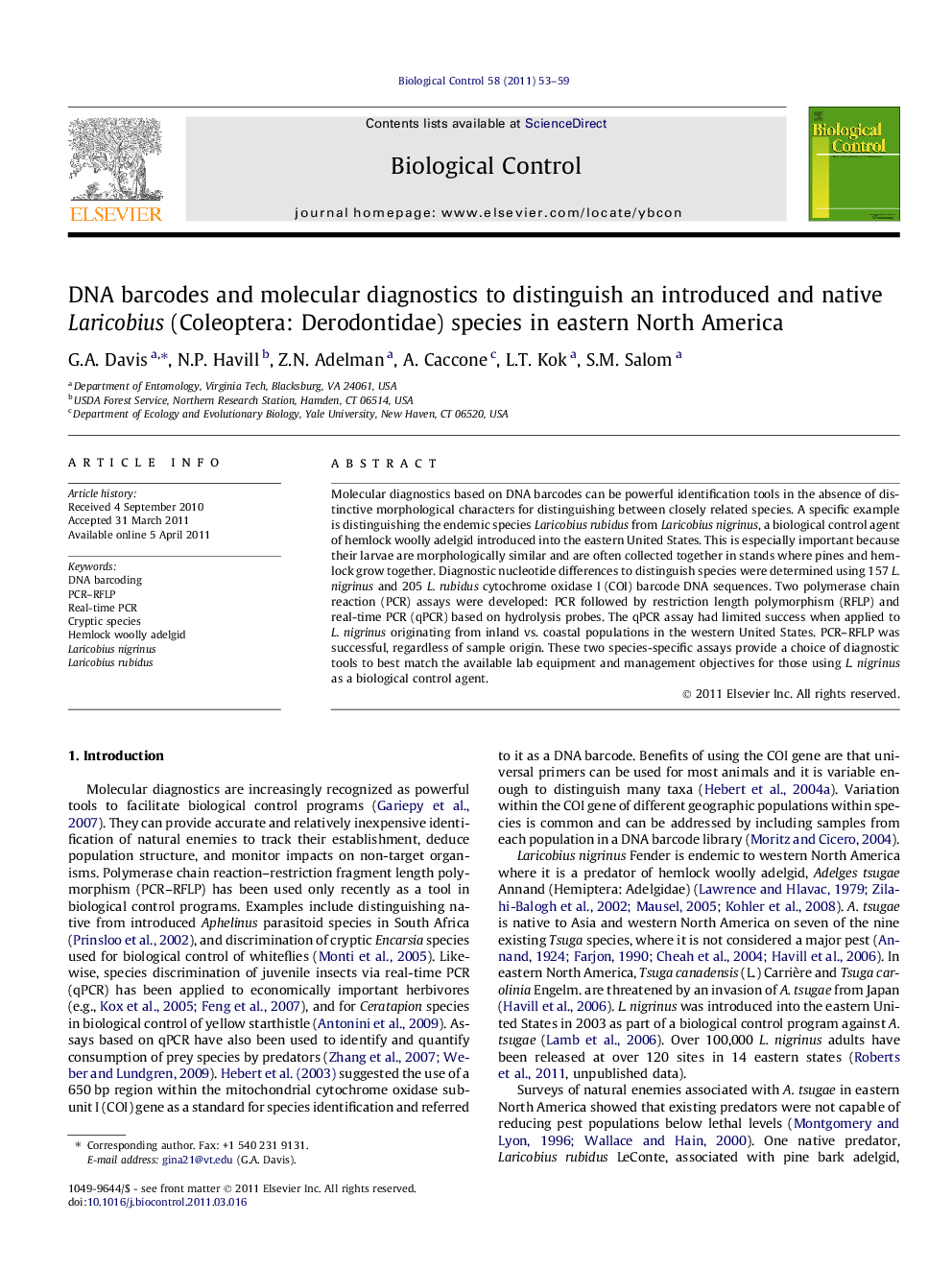| Article ID | Journal | Published Year | Pages | File Type |
|---|---|---|---|---|
| 4504169 | Biological Control | 2011 | 7 Pages |
Molecular diagnostics based on DNA barcodes can be powerful identification tools in the absence of distinctive morphological characters for distinguishing between closely related species. A specific example is distinguishing the endemic species Laricobius rubidus from Laricobius nigrinus, a biological control agent of hemlock woolly adelgid introduced into the eastern United States. This is especially important because their larvae are morphologically similar and are often collected together in stands where pines and hemlock grow together. Diagnostic nucleotide differences to distinguish species were determined using 157 L. nigrinus and 205 L. rubidus cytochrome oxidase I (COI) barcode DNA sequences. Two polymerase chain reaction (PCR) assays were developed: PCR followed by restriction length polymorphism (RFLP) and real-time PCR (qPCR) based on hydrolysis probes. The qPCR assay had limited success when applied to L. nigrinus originating from inland vs. coastal populations in the western United States. PCR–RFLP was successful, regardless of sample origin. These two species-specific assays provide a choice of diagnostic tools to best match the available lab equipment and management objectives for those using L. nigrinus as a biological control agent.
Graphical abstractFigure optionsDownload full-size imageDownload as PowerPoint slideHighlights► 362 Laricobius spp. DNA barcodes were deposited in GenBank. ► L. nigrinus and L. rubidus differ by 1.38% sequence divergence in the COI gene. ► PCR–RFLP and real-time PCR assays discriminate L. nigrinus and L. rubidus.
